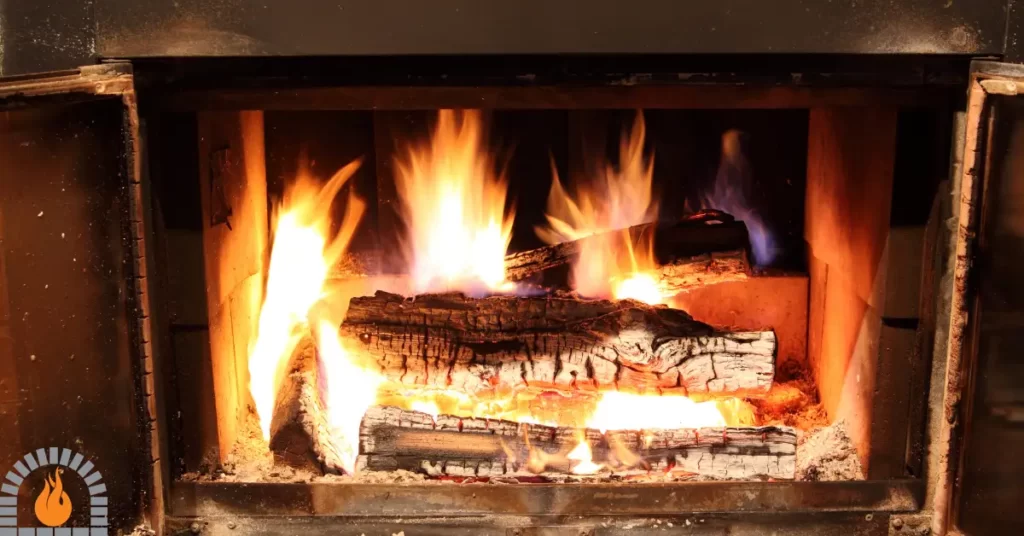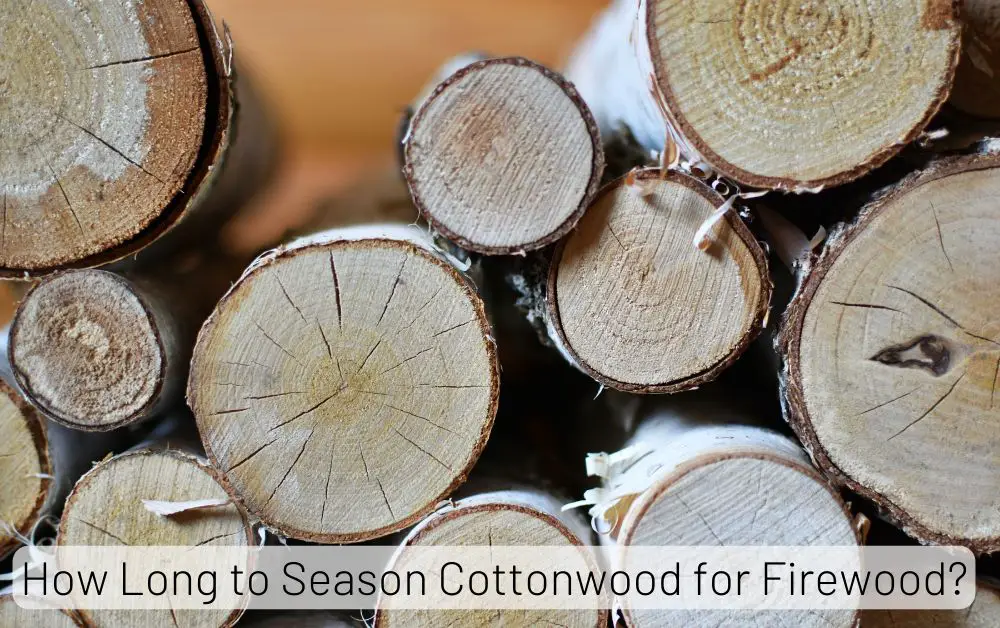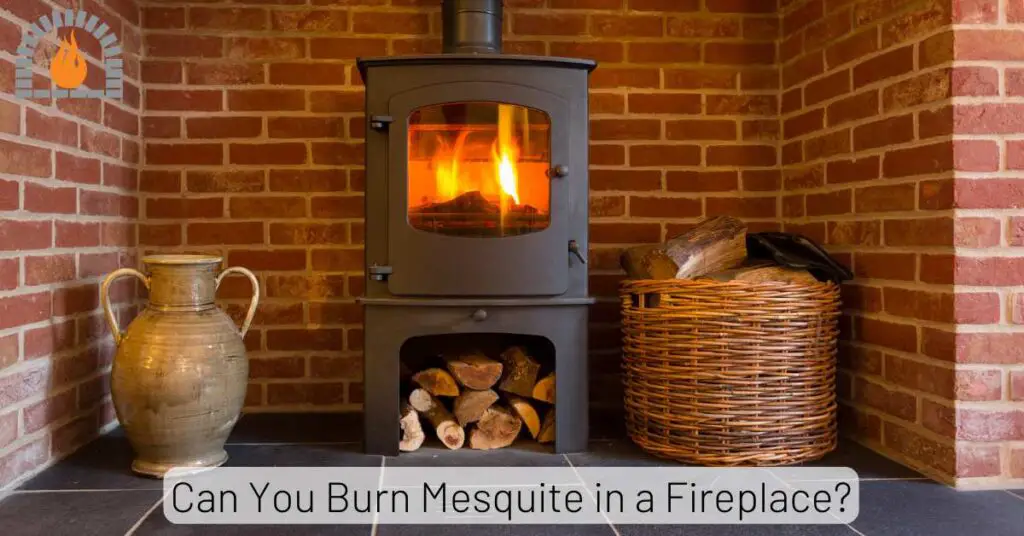Eucalyptus trees’ distinct aroma and rapid growth make them an intriguing option for various purposes. Eucalyptus wood is renowned for its durability and resistance to decay. With over 700 species, these trees vary widely but generally share certain characteristics that make them distinct. But can you burn eucalyptus wood?
With its high BTU (34.5 million BTUs) range, minimal smoke and sparks emission, and efficient coal production, Eucalyptus Wood emerges as an optimal choice for those seeking a reliable and eco-friendly option for burning.
Let’s uncover the facts and dispel the myths surrounding the combustion of this unique wood.
Eucalyptus Firewood Overview
| BTU | High (34.5 million) |
| Moisture Content | Low |
| Smoking | Minimal |
| Sparking | Low |
| Splitting | Moderate |
| Seasoning | Quick |
Can You Burn Eucalyptus Wood?
Yes, you can burn Eucalyptus Wood as a fuel source for your stoves, chimeneas, and fireplaces. Eucalyptus Wood is classified as a hardwood, boasting 34.5 million BTUs. Its high coal-producing frequency ensures a prolonged and efficient heat output, making it a reliable choice for heating applications.
Eucalyptus firewood, known for its low moisture content, holds promise as a fuel source. Dry wood is essential for efficient and clean combustion, making eucalyptus a potentially suitable option for those searching for an alternative heating solution.

Pros of Using Eucalyptus Wood for Burning
- Eucalyptus Wood is known for its high BTU content, ensuring efficient and effective heat production.
- Eucalyptus Wood generally has a low moisture content, contributing to cleaner combustion and reduced creosote buildup.
- This wood produces minimal smoke, making it a favorable choice for those seeking a cleaner and more environmentally friendly burning experience.
- Eucalyptus Wood produces low sparks, reducing the risk of potential hazards during burning.
- The wood has moderate difficulty when it comes to splitting, requiring some effort but manageable for most users.
- Eucalyptus Wood has a relatively quick seasoning time compared to some other types of wood, allowing for a faster turnaround from harvest to optimal burning conditions.
Cons of Eucalyptus Firewood
- Eucalyptus wood tends to have a higher resin content compared to other types of firewood. High resin content may lead to increased creosote buildup in chimneys.
- Eucalyptus wood burns rapidly, requiring more frequent replenishing.
- Intense heat produced may be too much for some heating appliances or fireplaces.
- Some individuals may be sensitive or allergic to Eucalyptus wood compounds.
Related Post: Can you burn hackberry wood in a fireplace?
Seasoning Eucalyptus Wood For Burning
Proper seasoning is essential to reduce moisture and improve the combustion characteristics. Here are some techniques for seasoning eucalyptus wood for burning:
- Split the wood into smaller pieces to increase the surface area exposed to air and speed up the drying process.
- Stack the split wood in a dry, well-ventilated area, preferably off the ground, to prevent moisture absorption.
- Cover the stacked wood with a tarp or other waterproof material to protect it from rain and snow. However, leave the sides open to encourage airflow.
- Elevate the woodpile slightly to allow air circulation underneath, reducing ground moisture absorption.
- Stack the wood with the cut ends facing outward to expose the maximum surface area for drying.
- Position the woodpile in an area that receives direct sunlight. Sunlight helps to accelerate the drying process by evaporating moisture.
- Allow the wood to season for an extended period, ideally six months to a year. This duration will vary depending on climate conditions.
- Ensure good air circulation around the woodpile to facilitate the drying process. Avoid stacking the wood too tightly.
- Invest in a moisture meter to check the moisture content of the wood regularly. Wood containing around 20% or lower moisture content is generally suitable for burning.
- Once the wood is adequately seasoned, store it in a dry place and avoid exposing it to moisture.

Safety Concerns and Precautions
Ensure that the eucalyptus wood is well-seasoned before use. Properly seasoned wood has a lower moisture content, promoting cleaner burning and reducing creosote production.
If using eucalyptus wood in an open fireplace, consider installing a spark arrestor to prevent sparks and embers from escaping.
Due to the potential for creosote buildup, it’s essential to have your chimney inspected and cleaned regularly, especially if you frequently burn eucalyptus wood.
Monitor and control the airflow to regulate the burning rate. Using a damper can help manage the intensity of the fire.
Keep flammable materials, furniture, and other items safe from the fireplace or wood stove. This is particularly important due to the potentially higher production of sparks.
Have a fire extinguisher nearby and familiarize yourself with proper fire safety measures. Ensure that smoke detectors are working properly.
To mitigate some of the characteristics of eucalyptus wood, consider mixing it with other hardwood types with more predictable burning properties.
Related Post: Can You Burn Fatwood in Fireplaces?
FAQs
Can you burn eucalyptus in a wood burner?
Yes, you can burn eucalyptus in a wood burner. Maintain proper airflow, use seasoned wood, and follow safety guidelines to mitigate the risk of overloading the stove and potential hazards associated with burning eucalyptus.
Is burning eucalyptus toxic?
No, the smoke of eucalyptus isn’t toxic. However, ingesting great swathes of eucalyptus leaves is toxic.
Is eucalyptus wood good for burning?
Eucalyptus wood is known for its high energy content and efficient burning characteristics. However, its high oil content makes it burn hot and fast, which may be challenging to control. Proper precautions, such as adequate ventilation and supervision, are essential when burning eucalyptus wood.
How long does it take to season eucalyptus firewood?
Eucalyptus firewood typically requires a longer seasoning period compared to some other woods. Aim for at least 6-12 months of drying time in a well-ventilated, dry area. Properly seasoned eucalyptus wood will burn more efficiently, producing less smoke and reducing the risk of creosote buildup in chimneys.
Can you burn eucalyptus wood indoors?
Burning eucalyptus wood indoors is possible, but precautions are crucial. The high oil content can lead to intense flames and increased emissions, impacting indoor air quality. Ensure proper ventilation, use well-seasoned wood and adhere to safety guidelines.
It’s advisable to consult local regulations and guidelines regarding indoor wood burning.
Can you burn eucalyptus leaves?
Burning eucalyptus leaves is not recommended. Eucalyptus leaves contain volatile oils that can release harmful compounds when burned, affecting air quality and posing health risks. Instead of burning, consider alternative methods like composting or using the leaves for mulch.
If burned, it should be done in a well-ventilated outdoor area, taking precautions to minimize exposure to the released compounds.
Final Thoughts: Can You Burn Eucalyptus Wood?
In conclusion, using Eucalyptus Wood as a fuel source is a compelling option for individuals seeking a reliable and efficient heating solution. With its classification as hardwood and an impressive 34.5 million BTUs, Eucalyptus Wood stands out for its high coal-producing frequency, ensuring a sustained and effective heat output.
Moreover, its low moisture content makes it a promising choice for clean and efficient combustion, addressing the need for dry wood in heating applications.
Affiliate Disclosure: Fireplaceadviser.com is a participant in the Amazon Services LLC Associates Program. We may earn a commission when you click on certain links on this site and purchase.

Hello!! I am Jamal Khan. I often fix my home electric heaters and gas stove problems and research the common issues in the heating units to improve my knowledge and expertise. The aim of establishing fireplaceadviser.com is to share my expertise and knowledge with my audience.


















